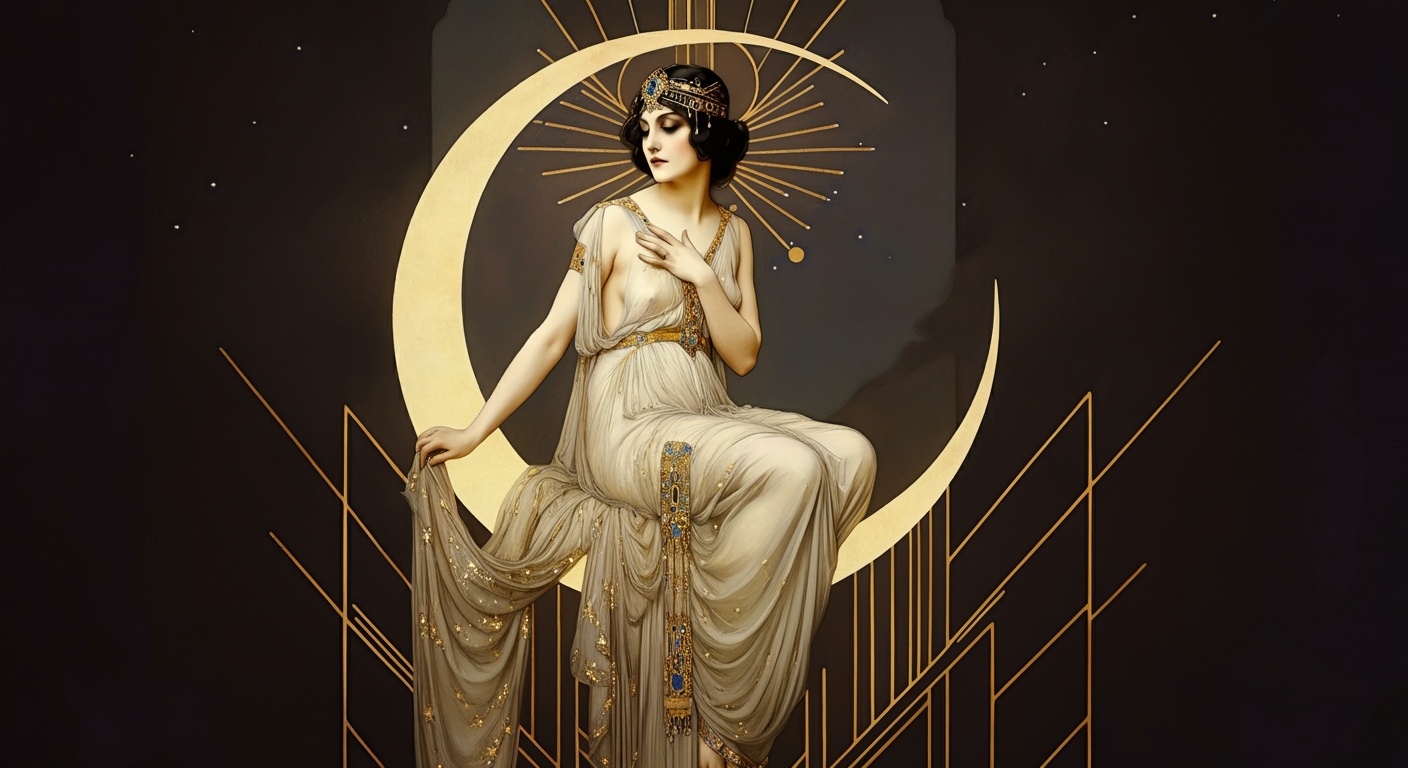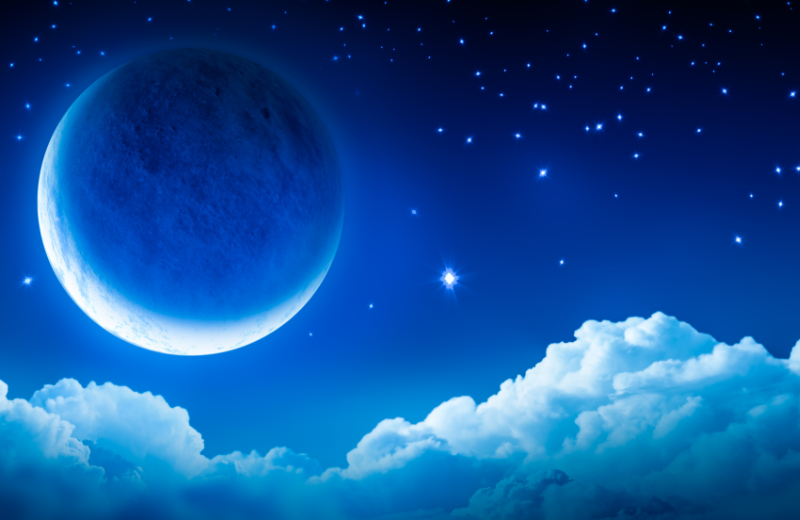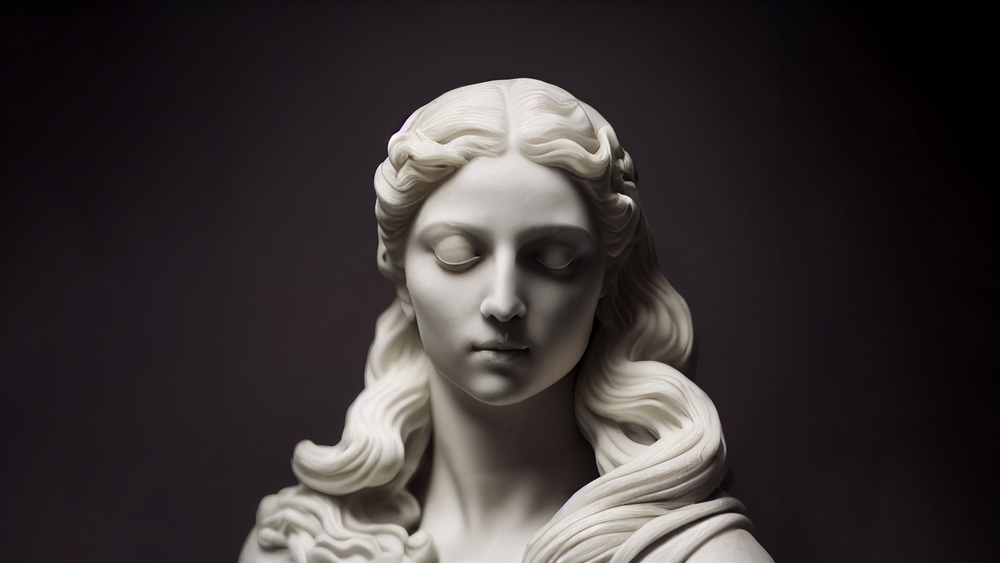In Greek mythology, the moon had its very own goddess—Selene. If you're curious about who Selene was and the legends surrounding her, you're in the right place. This blog post explores the myths, powers, and symbols of Selene, the Greek goddess of the moon.
Jump To:
- What is Selene Known For?
- The Myths and Legends of Selene
- Selene’s Love for Endymion
- Selene’s Chariot Across the Night Sky
- What Powers Does Selene Have?
- The Symbols of Selene
- Selene's Relationships, Children, and Family Tree
- Selene’s Worship and Legacy
- Frequently Asked Questions About Selene in Mythology
- Study Greek Mythology for £29
Recommended for you!
Best SellersWhat is Selene Known For?
Selene, in Greek mythology, is the personification of the moon. Unlike other deities associated with the moon, such as Artemis, Selene represents the moon itself, rather than just a connection to it. She is often depicted riding across the night sky in a chariot pulled by two horses, illuminating the world below with her radiant light.
Her name, Selene, simply means "moon" in Greek, and she was known to the ancient Greeks as the one who controlled its phases and light. She played a role in the rhythms of nature, such as marking the months and influencing tides. Though sometimes less well-known than other Greek gods and goddesses, Selene remains a powerful figure in mythology, representing the constant, watchful presence of the moon.
The Myths and Legends of Selene

Selene’s presence in Greek mythology is deeply intertwined with love, beauty, and the mysteries of the night. Her myths illustrate her gentle yet powerful nature:
Selene’s Love for Endymion
One of the most enduring myths involving Selene centres on her love for Endymion, a mortal shepherd or king, depending on the tale. Unlike the usual mortal relationships in mythology, Selene’s love for Endymion was so deep that she asked Zeus to grant him eternal sleep. This ensured that Endymion would remain forever youthful, frozen in time.
Every night, as he lay in his eternal slumber, Selene visited him, watching over him with tender affection. This story embodies Selene’s connection to eternal love and the beauty of the night, revealing her softer, romantic side.
Selene’s Chariot Across the Night Sky

Another key myth highlights Selene’s role in bringing light to the world after sunset. Each night, took her journey across the sky, guiding her chariot, which was pulled by two winged horses.
As she travelled from dusk until dawn, she illuminated the world with her moonlight, a symbol of hope and guidance in the darkness. This myth reflects her constant, reliable presence, a force of stability in the ever-changing cycles of nature.
What Powers Does Selene Have?
As the moon goddess, Selene’s powers are closely tied to her celestial influence. One of her primary powers was the ability to control the phases of the moon, influencing its waxing and waning. The moon’s cycles were important in ancient times, guiding everything from agricultural practices to the timing of religious festivals. Selene’s power over the moon was believed to extend to the natural world, influencing tides and the growth of crops.
Another significant power attributed to Selene was her ability to induce sleep and dreams. Since the night was her domain, it was thought that she had control over the night’s peaceful rest, and she was often associated with the calming effects of sleep. Her love for Endymion, whom she put into eternal sleep, is a mythological reflection of this power.
But Selene was not just about calm and peace. Some myths suggest she had the power to influence the emotions and minds of people, using the moon’s light to create a sense of wonder, awe, or even madness—a power shared with other lunar deities across cultures.
The Symbols of Selene

Selene is often depicted through a variety of symbols that illustrate her deep connection to the moon and her influence over the night. These symbols reflect her power, grace, and role in guiding and protecting the world through the cycles of darkness and light.
The Crescent Moon
Perhaps the most iconic symbol of Selene is the crescent moon, often shown as a diadem or crown resting on her head. This crescent represents her authority over the night sky and symbolises the moon’s phases, marking time and change. The crown also signifies her celestial power and her role as the embodiment of the moon.
The Torch
Another important symbol associated with Selene is the torch. She is sometimes depicted holding a torch, lighting the way through the darkness, just as the moon itself provides light during the night. This symbol emphasises her role as a protector and guide, ensuring safety and clarity for those who travel under her watchful gaze.
The Chariot
Selene’s chariot, drawn by two horses, represents her nightly journey across the sky. This symbol highlights her movement and connection to time and reflects the natural cycles she governs—the regular rising and setting of the moon. Her chariot is a powerful image of her ability to traverse the heavens, bringing light to the world below.
Selene's Relationships, Children, and Family Tree
Selene’s connections with her divine family and her relationships play a role in understanding her significance in Greek mythology. Her family tree highlights her link to the celestial forces, while her romantic relationships reveal her gentle yet powerful nature.
Parentage and Siblings
Selene was born to the Titans Hyperion, the god of light, and Theia, the goddess of sight and the shining ether. This prestigious lineage connects her to two other powerful deities: Helios, the god of the sun, and Eos, the goddess of the dawn. Together, Selene and her siblings were responsible for controlling the cycles of day and night, making them central to the ancient world’s understanding of time and nature.
Selene and Endymion
Selene’s love for the mortal Endymion is one of the most well-known myths surrounding her. While they never married in the traditional sense, their bond was one of deep, eternal love.
Selene’s Worship and Legacy

In ancient Greece, Selene was worshipped as part of the celestial trio, alongside her siblings Helios and Eos. She was not as widely worshipped as gods like Zeus or Athena, but she had her place in religious practices, especially in connection with the moon's phases and agriculture.
Temples were not typically dedicated solely to Selene, but she was honoured in rites connected to the moon, especially in its full form. Offerings were made to her to seek protection, fertility, and guidance during the night.
Recommended for you!
Best SellersFrequently Asked Questions About Selene in Mythology
Are Selene and Artemis the same goddess?
Selene and Artemis are distinct goddesses, though they are both associated with the moon. Selene is the personification of the moon itself, while Artemis, the goddess of the hunt, is often connected with the crescent moon as part of her symbolism. While they share lunar connections, their roles in Greek mythology are different.
Did Selene have any lovers besides Endymion?
Endymion is the most famous of Selene’s lovers, but in some lesser-known myths, Selene had other romantic connections. For example, some stories mention that she bore children with Zeus, including Pandia, the goddess of brightness. However, Endymion remains her most enduring and well-known love.
Is Selene considered good or evil?
Selene is generally considered a benevolent goddess. She embodies the calm, peaceful light of the moon and is associated with sleep, dreams, and the natural rhythms of the night. However, as with many deities, her powers could also inspire fear or awe, particularly her ability to influence emotions and even induce madness under the moon’s glow.
What are Selene's weaknesses?
In mythology, Selene doesn’t have clearly defined weaknesses like other gods and goddesses. However, her deep, enduring love for Endymion could be viewed as a vulnerability, as she is eternally bound to watch over him while he sleeps, highlighting the emotional depth of her character. Her overwhelming love could be seen as a source of both strength and sorrow.
Why does Selene hold a torch?
The torch is one of Selene’s symbols and represents her ability to bring light to the darkness, much like the moon itself. The torch signifies her role as a guide and protector during the night, illuminating the way for those who travel or seek protection under the moon’s glow.
How do you pronounce the name Selene?
Selene is typically pronounced as “Seh-LEE-nee” in English, closely reflecting the original Greek pronunciation.
Why is Selene associated with the moon?
Selene is the goddess and personification of the moon in Greek mythology. Unlike other deities who are connected to the moon, such as Artemis, Selene represents the moon itself, particularly its phases and light, which were crucial to timekeeping and natural cycles in the ancient world.
Is Selene immune to sunlight?
There are no myths that suggest Selene is immune to sunlight, but as the goddess of the moon, she is closely tied to the night. Her brother, Helios, represents the sun, and the two deities maintain a balance between day and night, with Selene ruling over the night sky.
What happened to Selene’s daughter, Pandia?
Pandia, the daughter of Selene and Zeus, is the goddess of brightness. Not much is written about her role in mythology, but her name is associated with the full moon’s brightness, further tying Selene’s family to lunar symbolism and the night sky.
What is the male version of Selene?
There’s no direct male counterpart to Selene in Greek mythology. However, her brother, Helios, the god of the sun, can be seen as her celestial counterpart. Helios governs the day, while Selene governs the night.
Study Greek Mythology for £29
The story of Selene is just one of many fascinating tales in Greek mythology, rich with themes of power, revenge, and moral complexity. If you’d like to learn more about these myths and explore the characters, symbols, and stories that have shaped Western culture, consider enrolling in the Greek Mythology Diploma Course with Centre of Excellence. For a limited time, you can access the course at a discounted price of £29!













